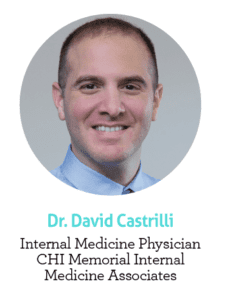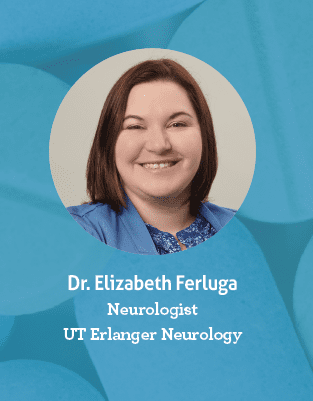By Camille Platt
You can feel it coming on. A deep, steady headache ready to erupt into a pulsating nightmare. Light and noise will make it worse. You’ll be crippled with nausea. You won’t be able to get anything done. We’re talking about migraines.
Headaches aren’t created equal, and migraines are notorious for being tricky to diagnose. Not to be confused with tension or sinus headaches, migraines are a neurological disease—more like epilepsy or strokes—that involves cranial blood vessels as well as nerve pathways and chemical changes in the brain. Here’s how it differs from other headaches:
• Migraine headaches are moderate to severe throbbing pains often isolated on one side of the head. For some, they are preceded by an aura in the visual field (e.g., a flashing light or blind spot) and/or numbness and tingling. Migraines may cause nausea, and they tend to worsen with movement, light, and noise. Eight out of 10 patients with the condition report sinus pain and pressure, so migraines are often confused with sinus infections.
• Tension headaches feel like mild to moderate bands of tightness around both sides of the head. Lasting as little as 30 minutes or as long as a week, the ache is distracting, but not debilitating, and may include tenderness in the neck and shoulders.
• Sinus headaches result from a viral or bacterial sinus infection. It may coincide with fever, decreased sense of smell, discolored nasal discharge, and pain in the forehead, cheeks, and upper teeth.
You Need… A Clear Diagnosis
“A clinical diagnosis is important because migraines require a very different treatment than cluster headaches and tension headaches,” says Dr. David Castrilli, an internal medicine physician with CHI Memorial Internal Medicine Associates.
 A medical professional can determine if your headache is a true symptom of migraines. Unless your headache was initiated by an injury, seizure, or an altered state of consciousness, a brain scan won’t be necessary. Migraines can’t be seen on imaging. “Diagnosis is made clinically, so a good history is important. We have to figure out what has and hasn’t worked,” says Dr. Elizabeth Ferluga, a neurologist with UT Erlanger Neurology.
A medical professional can determine if your headache is a true symptom of migraines. Unless your headache was initiated by an injury, seizure, or an altered state of consciousness, a brain scan won’t be necessary. Migraines can’t be seen on imaging. “Diagnosis is made clinically, so a good history is important. We have to figure out what has and hasn’t worked,” says Dr. Elizabeth Ferluga, a neurologist with UT Erlanger Neurology.
Migraines can be broken down into multiple diagnoses—migraines with aura, migraines without aura, and several sub-types of each. Knowing which one you suffer from is vital to successful treatment. “Migraine headaches are treated differently based on their type,” says Dr. Ferluga. “For example, people with migraine aura are at a slightly higher risk of stroke and will need a specific approach. We also need to know if your migraines are hemiplegic – a genetic type always treated with specific mediations.”
You Need… A Relationship with a Specialist
In the last few years, migraine research has come a long way. So to ensure the best treatment, you’ll want a doctor who has stayed current on the latest developments in prevention, treatment, and diagnosis. You also want a physician who is interested in preventing your pain, not just treating your symptoms.
Your physician should make you feel comfortable and understood. Validation and emotional support are important as you search for answers. You should never be told your pain is unimportant or less debilitating than you think it is. “Migraine sufferers often feel misunderstood by those who haven’t experienced this kind of pain,” says Dr. Castrilli. “Their friends and family may not get why Excedrin or ibuprofen isn’t enough.”
“I think people get very frustrated because pain is something we can’t see,” says Dr. Ferluga. “Many patients feel like they aren’t listened to.”
Because migraines are a chronic illness, treatment may continue throughout your life. Some say treating migraines is like treating a moving target—a plan can work for years only to lose its effect, making it necessary to try another approach. That’s where a long-term relationship with a specialist you trust comes in to play.
You Need… To Be Smart About Painkillers
Did you know that regular use of headache medication can actually lead to more pain? Called the “rebound effect,” the phenomenon occurs when you take pain relief medicine often enough to actually change the chemistry of your brain. “Over time, it can make you more sensitive to pain,” says Dr. Ferluga. “I estimate around half of my patients suffer from rebound headaches.”


“It can take six to eight weeks for the rebound effect to go away, and sometimes the headache will even get worse before it gets better,” says Dr. Ferluga. “Many patients give up too early because they’ve never been told this before.”
You Need… To Track Your Triggers
To help your doctor help you, keep a calendar where you mark migraine days for a reliable record. Keep a list of triggers too. Common ones include:
An unpredictable sleep schedule. Patterned sleep habits are key. Too little sleep can change the way your brain secretes proteins associated with chronic pain. Too much sleep—like staying in bed on a Saturday morning—can also set you up for migraines. If your alarm normally goes off at 6 a.m., set it for the same time on the weekend.
Fluctuating hormone levels. The drop in hormones before a woman begins her menstrual cycle may trigger migraines because estrogen helps control the chemicals in the brain related to pain.
Too much (or too little) caffeine. While caffeine provides some headache relief, it can be a double-edged sword. Regular consumption may cause the body to
develop a tolerance and it will become less effective. Caffeine can also put you at risk for a rebound headache.
Weather and altitude. Changes in barometric pressure or weather patterns can make for a bad day. So be wary if a storm front is rolling in or you’re heading into the first warm, windy day of spring.
Recovering from stress. Stress is one of the most common migraine triggers. The headache tends to set in not at the height of your tension but later on, as you wind down.
Diet. Food and beverages containing sulfites (wine) or tyramine (aged cheeses and meats) can trigger migraines.
By avoiding triggers, most migraine sufferers can see a drastic reduction in the number of episodes. But the discovery process takes time and faithful logging. “Sometimes, the onset of migraines may happen a while after exposure,” says Dr. Castrilli. “It can make identifying these triggers very challenging.”
You Need… To Hang in There
If you suffer from debilitating migraines, take heart. While the condition has no cure, proper treatment can reduce the severity and frequency of your pain. The majority of patients can find relief through the help of a specialist and an individualized treatment plan.
If you have more than four to six migraine episodes a month, you may be a good candidate for preventative medications. Research shows 1 in 3 migraine sufferers are candidates for preventative medications, which can cut the frequency of headaches in half. In a matter of weeks, a beta blocker, antidepressant, calcium channel blocker, or anticonvulsant medication can significantly reduce your attacks.
Want to learn more? The National Headache Foundation offers comprehensive resources to help patients and families better understand headaches and migraines, as well as learn about advances in treatment. Visit online today at headaches.org.



